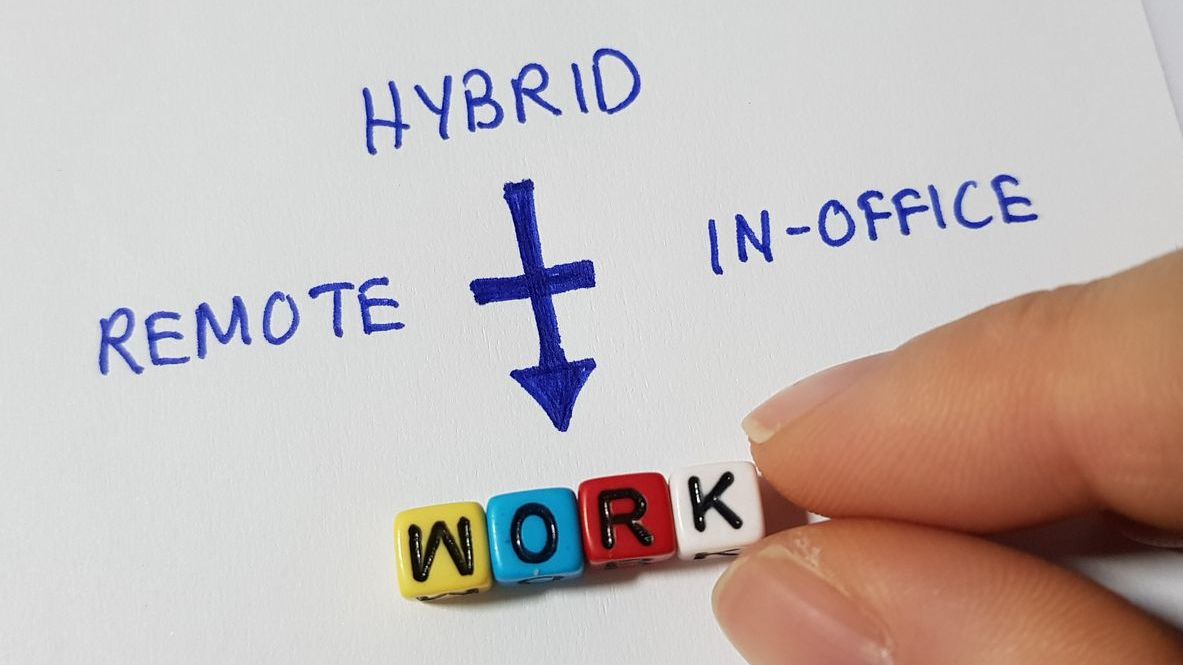What Is a Hybrid Work Model?
A hybrid work model blends remote and on‑site work so employees split time between home (or any remote location) and a physical workplace. Some companies prescribe specific in‑office days; others allow full employee choice within guidelines. The goal is to capture the focus time, flexibility, and wider talent reach of remote work—while preserving the collaboration, social connection, and speed of co‑located time.
What Are the Types of Hybrid Working Models?
Hybrid isn’t one thing. Common variants include office‑first with limited remote days; office‑first with generous remote; remote‑first with access to shared hubs; and fully digital‑first with no assigned office. Other scheduling patterns include flexible hybrid (employee choice), split‑week (set days in/out), week‑by‑week rotations, team‑based coordination, and core‑hours models that mix presence windows with location flexibility.
What Factors Are Driving Hybrid Work?
Employee demand for flexibility and work‑life balance remains the top driver—most remote‑capable workers still prefer hybrid over fully on‑site arrangements. Cost optimization (real estate, commuting), access to broader talent pools, environmental goals, and tech maturity in collaboration platforms all reinforce adoption. Organizations are also shifting toward results‑based performance cultures, making location less central when outcomes are clear.
What Are the Key Benefits of Hybrid Work?
Work‑life balance & wellbeing: Large majorities of hybrid workers cite improved balance; reclaiming commute time fuels morale and retention.
Productivity & focus: Many leaders report productivity gains when employees can match work location to task—deep work remotely, collaboration in person.
Talent & inclusivity: Hybrid broadens hiring reach and supports parents, caregivers, people managing health conditions, and employees with disabilities who benefit from adaptable environments.
Cost savings: Reduced commuting costs for employees and lower facilities footprints for employers can generate meaningful savings per headcount.
What Are the Biggest Challenges of Hybrid Work?
Hybrid introduces new friction points: communication gaps between in‑office and remote staff; scheduling complexity; unequal visibility that can skew career opportunities; data security exposures across networks; burnout when boundaries blur; and risks to cohesion if culture becomes fragmented across locations. New hires and junior talent can struggle with onboarding and access to informal learning when presence is inconsistent.
How Do You Choose the Right Hybrid Work Schedule?
Align schedule design to business outcomes first, then layer in employee choice. Options include fixed in‑office anchor days for collaboration, flexible pick‑your‑days frameworks, role‑ or team‑based coordination, and on‑demand drop‑in models supported by desk/room booking tools. Avoid arbitrary mandates; instead, co‑create policies with teams—the approach most associated with perceptions of fairness and better collaboration outcomes.
How Can You Maintain Culture & Inclusion in a Hybrid Workforce?
Culture won’t "just happen" across distributed locations. Define or refresh values that emphasize trust, autonomy, inclusivity, and purposeful together time. Design in‑office days around high‑value collaboration, mentoring, social connection, and milestone moments—especially for newer employees. Use regular rituals, recognition, and hybrid‑friendly team‑building (onsite + virtual) to keep everyone visible and valued regardless of location.
What Hybrid Workforce Best Practices Actually Work?
Below are high‑impact practices consistently recommended across leading guides and workforce research:
Get employee feedback early & often. Survey preferences; ask what employees missed, didn’t miss, and invented during full remote. Use the input to shape policy.
Set clear, written policies & expectations. Ambiguity drives stress; codify where work happens, meeting norms, response windows, security rules, expense guidance, and performance metrics.
Leverage the right technology stack. Combine collaboration platforms (chat, video, docs), hybrid management tools (desk/room booking, presence planning), secure device management, and analytics to understand usage patterns.
Train managers for hybrid leadership. Coaching on communication cadence, inclusion of remote voices, outcome‑based performance, and boundary modeling reduces burnout and disengagement across locations.
Be intentional about in‑office days. Optimize space for collaboration; cluster 1:1s, workshops, onboarding sessions, and social connection when people are physically together to justify the commute.
Use data to iterate. Track attendance patterns, space utilization, engagement scores, attrition, and productivity metrics; refine policies as needs shift.
What’s Next for Hybrid Work (AI, Well‑Being & the Future)?
Expect more personalization of work patterns, heavier reliance on AI copilots to reduce meeting load and automate routine tasks, deeper analytics on space and collaboration, and renewed focus on mental health and belonging as loneliness emerges as a business risk. Organizations experimenting with AI‑enabled "frontier" operating models are redesigning processes around human + intelligent agents—further decoupling work from place while demanding new skills and governance.
